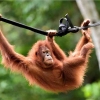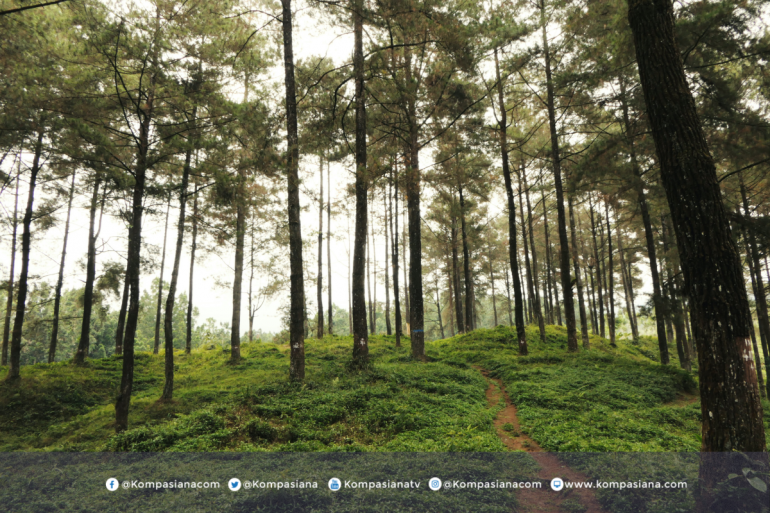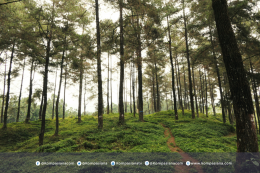Imagine a small hand, long gentle fingers curling around a twig, an orange face lifting against a curtain of green. For a moment the world narrows to two brown eyes that seem to ask quietly, are you listening? That gaze is not merely photogenic. It is the voice of a species that carries the memory of Indonesia's rainforests. Today those voices are thin. The forests that made orangutans who they are are shrinking, and with them a way of living that has taught us patience, ingenuity, and care.
A crisis told in a landscape
Orangutans live only on the islands of Borneo and Sumatra. In Indonesia they belong to the forest and to our story. Their world is made of canopies, vines, fruiting trees, and the slow lessons passed from mother to child. Yet that world is being carved into fragments to make space for plantations, roads, and mines. Fires flare to clear land and then spread into habitat. Illegal trade takes babies from their mothers and leaves empty nests in the trees. Every lost tree is not just timber removed from the earth. It is a classroom, a grocery store, and a hospital taken from a living being that relies on a single forest home for everything.
Orangutans are among the most iconic residents of Southeast Asia's rainforests and among the most threatened. Authoritative sources list populations at roughly 104,700 Bornean, 13,846 Sumatran, and about 800 Tapanuli individuals (World Wildlife Fund, n.d.). Longer term studies paint a starker picture in places: an estimated 148,500 orangutans vanished from Borneo's forests between 1999 and 2015, a loss that reads like a disappearing chorus (Orangutans in Crisis, n.d.) . Between 2016 and 2019 nearly 800,000 hectares of orangutan habitat in Indonesia and Malaysia were cleared, most of it in Indonesia, as forests were converted for plantations, mining, and other uses.
Why such a rapid fall? The simple brutal answer is habitat loss. But beneath that answer are choices made every day by people and by systems. For baby orangutans, a mother's lessons are taught among branches that in many places no longer exist (Environmental Investigation Agency, 2021) .
Seeing the forest from the canopy
To feel the crisis we must change our viewpoint. Orangutans do not walk on the ground the way many mammals do. They move in a vertical world. Their nests are woven in the branches. Their knowledge of edible fruits, safe paths, and useful leaves is taught slowly and carefully over many seasons by mothers who invest deeply in their offspring. When that vertical world is cut down, their entire culture is erased. The loss is not only ecological. It is cultural and emotional.
There is a wisdom in that slow learning that runs against our age of speed. Orangutan mothers invest in a single child for many years. They teach survival skills, tool use, and social behavior. In their tempo we find a counterpoint to our rush. Their patience is an invitation: long term care, not short term extraction, builds resilience.
Stories from the canopy: loss, rescue, and hard decisions
Behind every statistic is a story. Conservation groups and local communities frequently find orphaned babies clinging to the trunks of burned trees, or confused adults walking along plantation edges searching for food. Rescue centers tell of long patient work. Caregivers spend months and often years teaching young apes how to climb, how to find food, and how to read the cues of the forest. Releasing an orangutan back into the wild is not simply letting an animal go. It is returning a student to a classroom the student must learn to navigate again (The Guardian, 2025).
Relocation programs are sometimes necessary. At the same time studies and investigative reporting have shown that translocations are complex and sometimes harmful, because individuals may struggle to find food or mates in unfamiliar territories. Rescue centers are a form of repair, a human remedy for harm humans have caused, and they demonstrate a simple truth: compassion can make a practical difference. Yet rehabilitating individuals cannot replace intact forests. Rehabilitated orangutans need connected healthy habitat where their culture can continue across generations.
Hope is not a slogan, it is work







